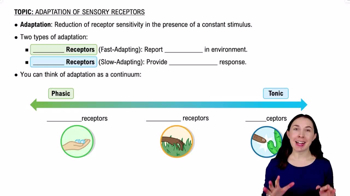Textbook Question
Eileen presents with flu-like symptoms, including fever, chills, and body aches.
What part of the immune response is likely producing these symptoms?
148
views
 Verified step by step guidance
Verified step by step guidance Verified video answer for a similar problem:
Verified video answer for a similar problem:



 1:9m
1:9mMaster Chemical Barriers with a bite sized video explanation from Bruce Bryan
Start learning